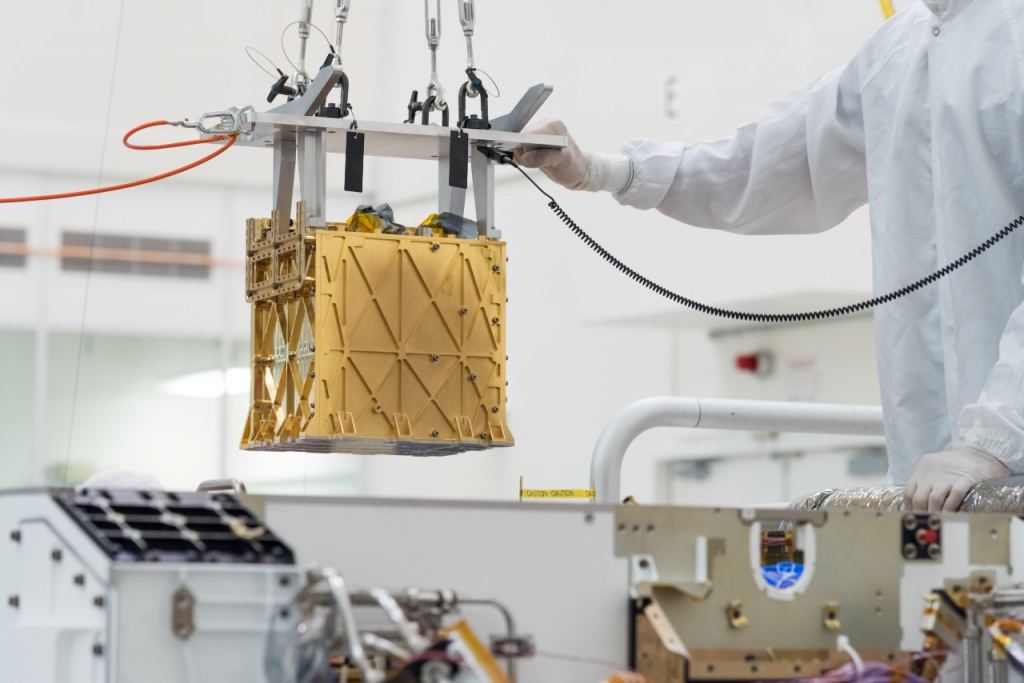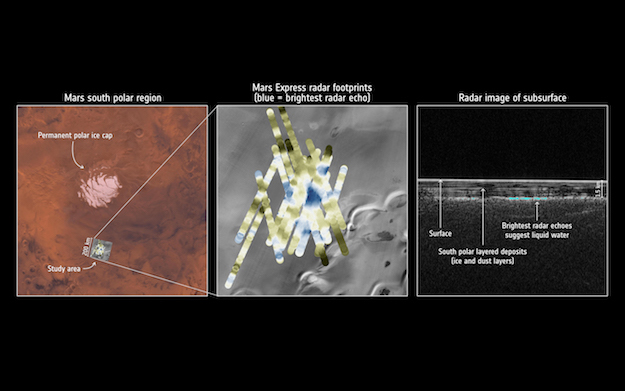In the coming decades, multiple space agencies and private companies plan to establish outposts on the Moon and Mars. These outposts will allow for long-duration stays, astrobiological research, and facilitate future Solar System exploration. However, having crews operating far from Earth for extended periods will also present some serious logistical challenges. Given the distances and costs involved, sending resupply missions will be both impractical and expensive. For this reason, relying on local resources to meet mission needs – aka. In-Situ Resource Utilization (ISRU) – is the name of the game.
The need for ISRU is especially important on Mars as resupply missions could take 6 to 9 months to get there. Luckily, Mars has abundant resources that can be harvested and used to provide everything from oxygen, propellant, water, soil for growing food, and building materials. In a recent study, a Freie Universität Berlin-led team evaluated the potential of harvesting resources from several previously identified deposits of hydrated minerals on the surface of Mars. They also presented estimates of how much water and minerals can be retrieved and how they may be used.
The team was led by Christoph Gross, a Postdoctoral researcher with the Planetary Sciences and Remote Sensing Group at the Institute of Geological Sciences, Freie Universität Berlin. They were joined by researchers from the SETI Institute, NASA’s Ames Research Center, the Institut d’Astrophysique Spatiale, and the Institute of Space Systems at the German Aerospace Center (DLR). Their research paper, “Prospecting in-situ resources for future crewed missions to Mars,” will be published in the October 2024 issue of Acta Astronautica.

As the authors note, NASA and other space agencies are invested in ISRU technologies to significantly reduce the overall mass that must be sent to the Moon or Mars to support human exploration efforts. In recent years, this has led to experiments like the Mars Oxygen In-Situ Resource Utilization Experiment (MOXIE) on NASA’s Perseverance rover, which produced oxygen gas from Mars’ atmospheric carbon dioxide. The ESA is also preparing an ISRU Demonstration Mission to demonstrate that water and oxygen can be produced from water ice harvested on the Moon.

These resources would have applications for life support systems, ensuring mission crews have breathable air and water for drinking and irrigation. However, they also have applications for power and propulsion, providing hydrogen gas for fuel cells or reactors and being used in combination to create liquid hydrogen (LH2) and liquid oxygen (LOX) propellant. On Mars, most of the water there today is concentrated in the polar ice caps and permafrost or in pockets of hydrated minerals where water once flowed on the surface.
For the sake of their study, Gross and his colleagues focused on hydrated mineral sites since they offer the potential for water extraction directly at the surface and at lower latitudes. But as Gross told Universe Today via email, these deposits also have potential resource applications that go beyond just water:
“The hydrated minerals on Mars are the largest water reservoir on Mars known to date (mainly sulphates and phyllosilicates). Water can relatively easily extracted from sulphates and as described in the paper, the minerals can also be used as fertilizer for food production. The phyllosilicates could be used as building material or, for example, for ceramics. Water is the most important resource, especially propellant production. This may be more interesting for Mars due to the distance to Earth, gravity, etc.”
Next, Gross and his colleagues assessed different geographical locations where hydrated minerals have been identified based on data obtained by the Compact Reconnaissance Imaging Spectrometer for Mars (CRISM) instrument aboard NASA’s Mars Reconnaissance Orbiter (MRO). This included Mawrth Vallis, an ancient flood channel that opens into the Chryse Planitia plains in Mars’ northern hemisphere, and Juventae Chasma, a 5 km (~3 mi) deep basin located north of Valles Marineris.

“Regions hosting a variety of different materials may be interesting,” said Gross. “Then, the site must be easily accessible (not in a canyon, etc.), and it should be close to interesting science sites. I would also support the idea of having a base in equatorial regions where the temperatures are not too cold. And there should be enough space around the base to grow with follow-up missions. Meridiani Planum is a hot candidate. We shall try to constrain the resources there, too.”
Gross and his colleagues also recommended how these resources should be extracted. According to the authors, the dehydration of mono- and poly-hydrated sulfates is theoretically the best approach since several methods exist that are relatively straightforward, fast, and energy-efficient ways exist to do this. They also recommend that robotic missions be sent in advance of astronauts to scout, assess, and begin harvesting and processing these resources in anticipation of their arrival.
“Robotic precursor missions could start mining and refining the resources, especially for propellant production,” said Gross. “NASA and private companies are conducting many studies concerning this point. Also, for example, the robotic construction of habitats or the pre-production of oxygen are conceivable projects.”
This analysis presents new possibilities for exploration and long-term habitats on Mars. Although the polar regions are seen as a good place for building future habitats, mainly because of the abundant frozen water they have access to, extracting this ice (especially from deep underground sources) will be expensive and restrictive. The possible use of hydrated minerals not only offers an alternative for ISRU operations on Mars, but opens sites in the equatorial region to exploration and habitat creation.
Further Reading: Acta Astronautica
The post Resources on Mars Could Support Human Explorers appeared first on Universe Today.
No comments:
Post a Comment